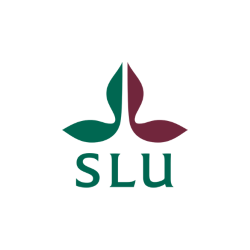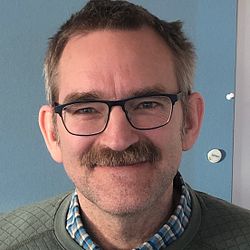Pressmeddelande -
Roots and associated fungi drive carbon storage in boreal forests
Boreal forests cover vast areas of the northern hemisphere and are a carbon sink of global importance. With changing climate and land use in the boreal zone, it is critical to understand the factors that promote carbon storage in these ecosystems. A paper published today in the international scientific journal Science, authored by researchers at the Swedish University of Agricultural Sciences (SLU), with collaborators in Lund, Örebro and Helsinki, points to crucial and previously unrecognized roles of roots and root-associated fungi in promoting carbon storage in these forests.
The prevailing dogma has been that aboveground plant litter (e.g. dead needles and wood) is the principal source of carbon storage in boreal forest soils. However, these new findings overturn this dogma by showing that a large proportion of the carbon stored in boreal forests instead enters the soil from beneath, via roots and their associated mycorrhizal fungi.
The findings are based on a study of 30 forested islands in the Lakes Uddjaure and Hornavan in northern Sweden. These islands differ greatly in fire history; some have burned within the last century, whereas others have not been disturbed by fire for at least 5000 years. The organic humus layer, and therefore soil carbon storage, increases with time since fire, so that islands with long-standing, continuous forest cover have humus layers that exceed one meter in depth, whereas islands with recent forest fires have humus layers of 10-20 cm, similar to boreal forest on the mainland.
The researchers modeled carbon age in the humus profiles based on C-14, and found that 50-70% of the stored carbon originates from root-derived inputs rather than from deposits of aboveground plant litter. With increasing time since fire, the contribution of the root-derived inputs to the humus profile, and thus the carbon stored within the humus, increases. Thus, processes in the rooting zone determine the large soil carbon storage in old growth forests that have not burned for many years.
By use of massively parallel DNA sequencing techniques the highly diverse fungal communities could be analyzed down to the level of individual species. These analyses show that, while the dominant fungi near the surface of the humus profile are those known to depend on plant litter falling from above, those deeper in the profile are species known to be associated with roots, such as mycorrhizal fungi. These fungi live in symbiosis with plant roots and transport carbon gained from plant photosynthesis into the soil environment. The authors used chemical analyses to demonstrate that much of the stored carbon in the rooting zone originates from fungal material, and that impaired breakdown of fungal residues is an important contributing factor to long-term carbon accumulation in boreal forest soils.
These results challenge existing dogma by revealing an alternative process in which deep organic humus layers grow from below through continuous addition of recently fixed carbon in the form of residues from roots and associated fungi. This finding enables us to better predict how boreal forest carbon storage serves as a carbon sink that may offset increases in greenhouse gases, and helps to identify the factors and types of management that maximize carbon storage in boreal forests.
Further reading
Contact information
Karina.Clemmensen@slu.se, ph +46-(0)76-168 06 70
Bjorn.Lindahl@slu.se, ph +46-(0)18-67 27 25
David.Wardle@slu.se
Alf Ekblad, Örebro University (alf.ekblad@oru.se)
Håkan Wallander, Lund University (hakan.wallander@biol.lu.se)
Otso Ovaskainen, Helsinki University (otso.ovaskainen@helsinki.fi)
Ämnen
Kategorier
Regioner
SLU:s vision: SLU är ett universitet i världsklass inom livs- och miljövetenskaper.


